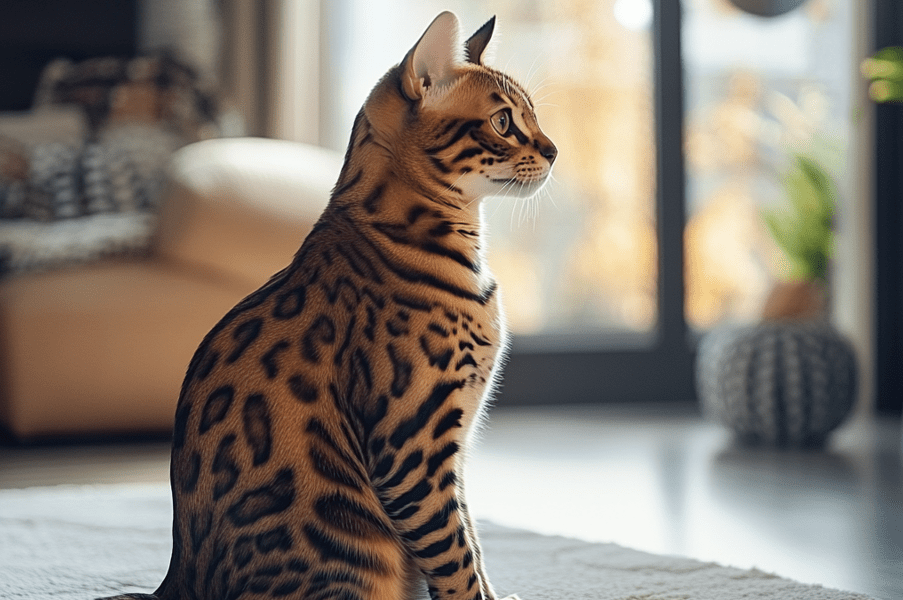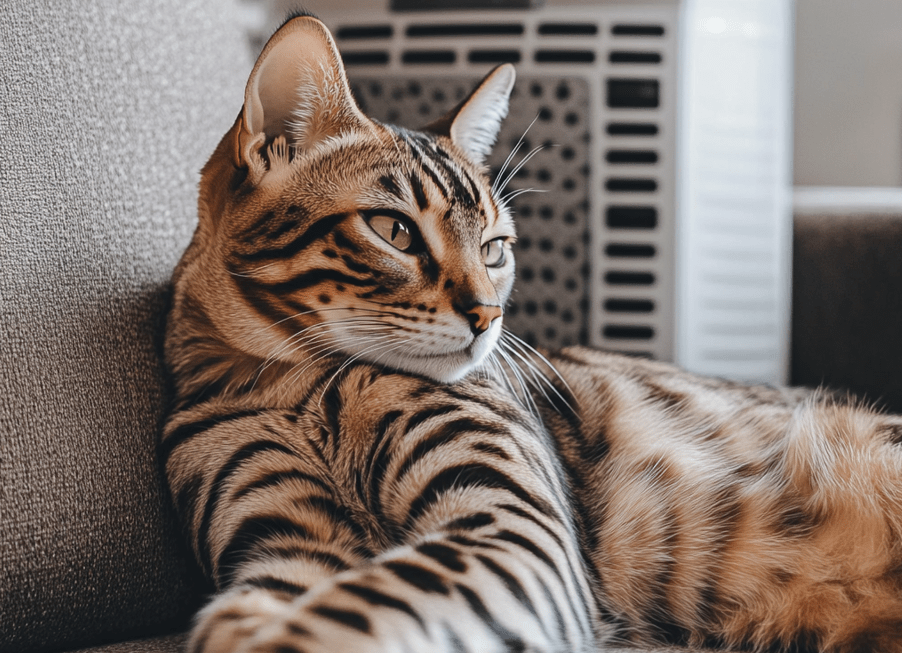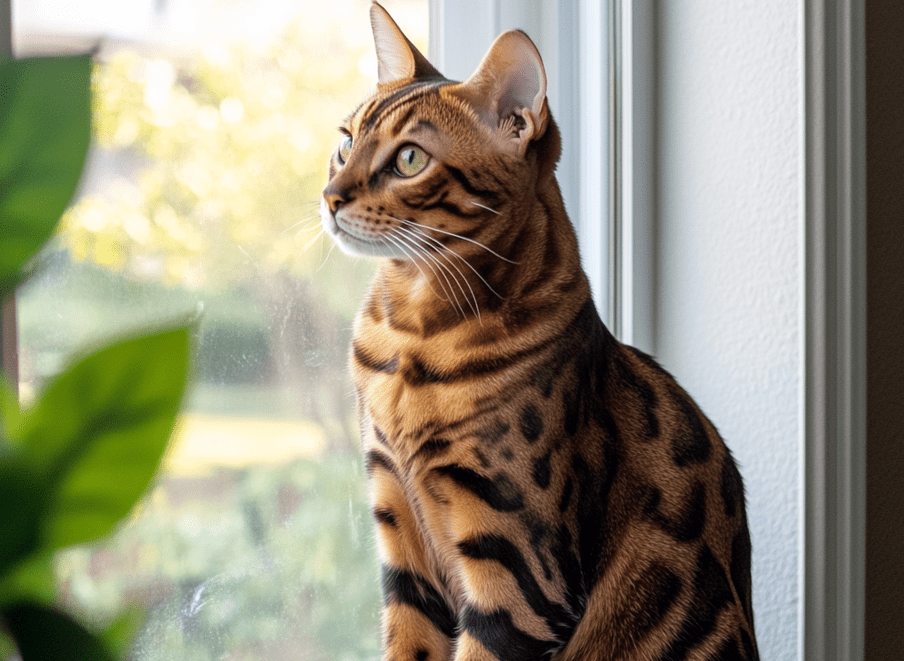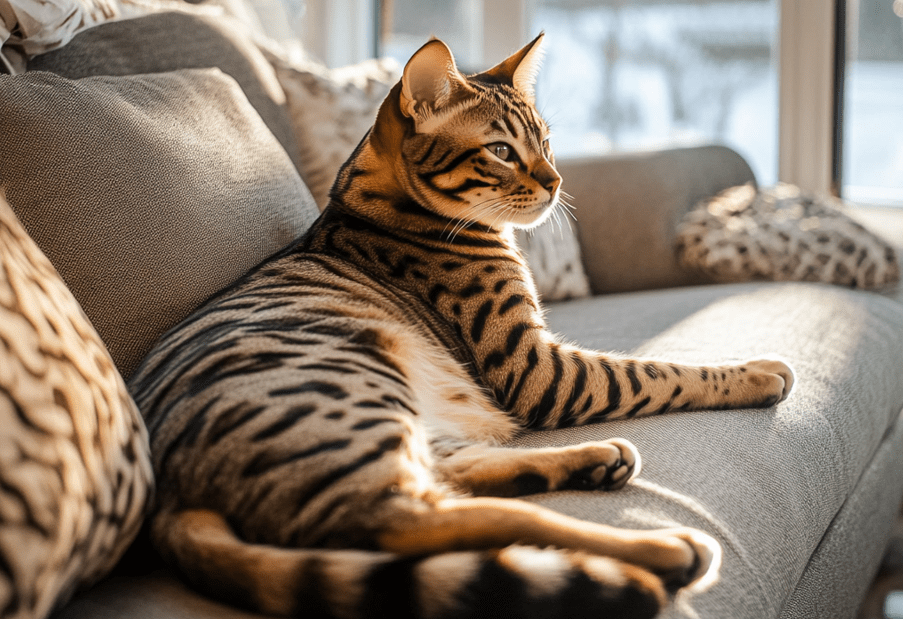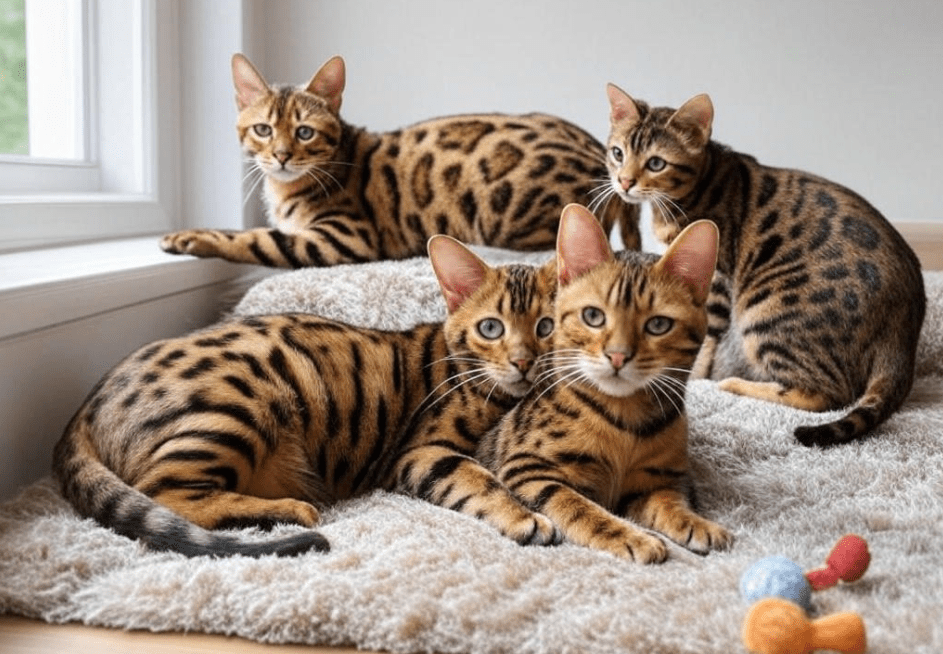
Bengal cats, with their stunning leopard-like coats and vibrant personalities, are a favorite among cat lovers. However, one common concern for Bengal cat owners is managing shedding, especially during seasonal changes. Shedding can affect your cat’s comfort and your home’s cleanliness. In this comprehensive guide, we’ll explore why Bengal cats shed, how seasonal changes impact their coat, and practical strategies to manage shedding effectively. Our goal is to provide Bengal cat owners with actionable tips to keep their pets healthy and their homes fur-free.
Why Do Bengal Cats Shed?
Shedding is a natural process for all cats, including Bengals. It allows them to replace old or damaged fur, regulate body temperature, and maintain a healthy coat. Bengal cats have a unique, short, dense coat that gives them their signature shimmer. While they are often described as low-shedding compared to other breeds, they still experience regular hair loss, particularly during seasonal transitions.
Several factors influence shedding in Bengal cats:
Coat Type: Bengals have a single-layer coat, unlike double-coated breeds, which means they shed less overall but still lose hair regularly.
Seasonal Changes: Temperature and daylight shifts trigger hormonal changes that prompt shedding, especially in spring and fall.
Health and Diet: Poor nutrition, stress, or underlying health issues can increase shedding.
Grooming Habits: Inadequate grooming can lead to matting or excessive loose fur.
Understanding these factors is key to managing Bengal cats’ shedding effectively, especially during seasonal changes.
How Seasonal Changes Affect Bengal Cats’ Shedding
Seasonal changes play a significant role in a Bengal cat’s shedding cycle. Cats, including Bengals, are sensitive to environmental cues like temperature and daylight hours, which signal their bodies to adjust their coats. Here’s how each season impacts shedding:
Spring Shedding
In spring, Bengal cats typically shed their thicker winter coat to prepare for warmer weather. This is often the most noticeable shedding period, as they lose dense fur to stay cool. The increase in daylight hours triggers hormonal changes that stimulate hair follicle turnover, leading to more loose fur.
Fall Shedding
In fall, Bengals shed their lighter summer coat to grow a denser winter coat. This shedding may be less intense than in spring but can still result in noticeable fur around your home. The shorter daylight hours and cooler temperatures signal the need for a warmer coat.
Summer and Winter
Shedding is generally minimal during summer and winter, as the coat is stable for the season. However, indoor Bengals may experience altered shedding patterns due to artificial lighting and consistent indoor temperatures, which can disrupt their natural cycles.
By anticipating these seasonal shifts, Bengal cat owners can take proactive steps to manage shedding and keep their cats comfortable.
Are Bengal Cats Heavy Shedders?
Compared to breeds with double coats, such as Maine Coons or Persians, Bengal cats are considered low to moderate shedders. Their short, single-layer coat sheds less frequently and in smaller quantities. However, shedding can still be noticeable, especially during seasonal changes or if the cat’s health or environment isn’t optimized.
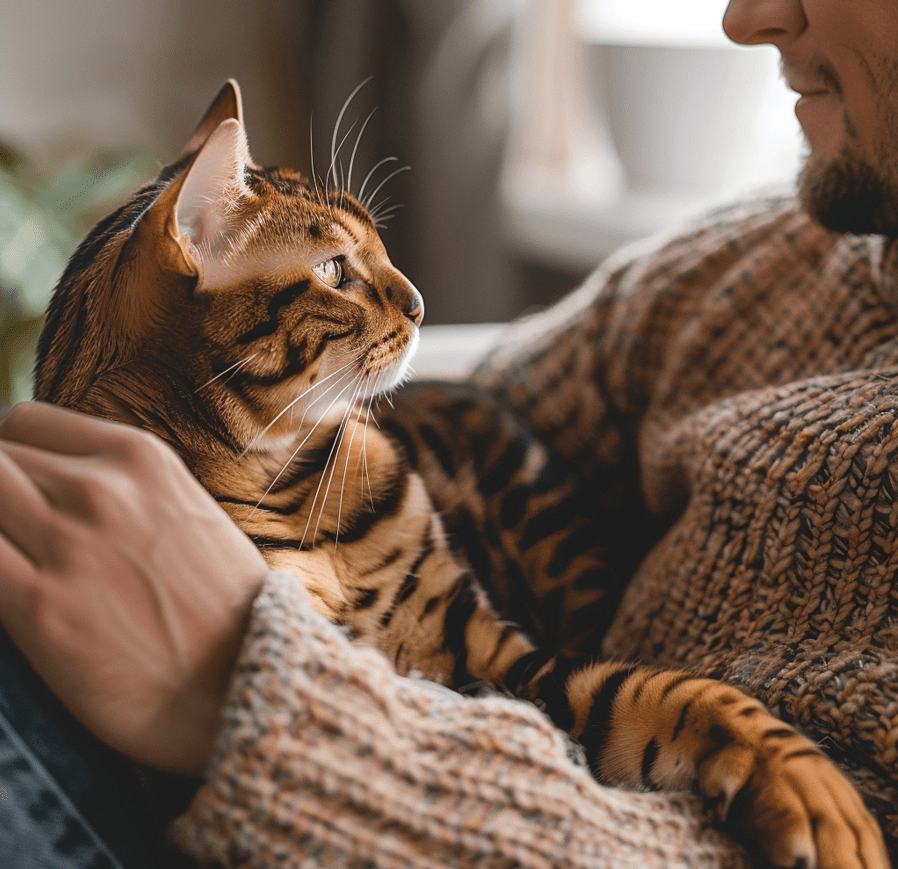
Factors that may make a Bengal cat appear to shed heavily include:
Poor Diet: Nutrient deficiencies can weaken the coat, leading to excessive shedding.
Stress: Changes in routine or environment can trigger stress-related shedding.
Skin Conditions: Allergies or parasites, like fleas, can cause increased hair loss.
Lack of Grooming: Without regular brushing, loose fur accumulates and spreads.
With proper care, Bengal cats’ shedding can be kept to a minimum, even during peak seasons.
Effective Strategies to Manage Shedding in Bengal Cats
Managing shedding in Bengal cats requires a combination of grooming, nutrition, environmental adjustments, and health monitoring. Below, we outline practical, vet-approved strategies to keep shedding under control.
1. Regular Grooming
Grooming is the cornerstone of shedding management. Regular brushing removes loose fur, prevents matting, and distributes natural oils for a healthy coat. Here’s how to groom your Bengal cat effectively:
Choose the Right Tools:
Deshedding Brush: A tool like the FURminator removes loose undercoat hair without damaging the topcoat.
Rubber Grooming Mitt: Great for Bengals who dislike brushes, as it mimics petting while collecting fur.
Fine-Tooth Comb: Useful for sensitive areas like the face and paws.
Brush Weekly: During non-shedding seasons, brush your Bengal once or twice a week. Increase to daily brushing during spring and fall.
Bathe as Needed: Occasional baths with a cat-safe, hypoallergenic shampoo can reduce loose fur and dander. Avoid over-bathing, as it can dry out the skin.
Check for Mats: Bengals rarely mat due to their short coats, but regular grooming prevents any buildup.
Tip: Make grooming a positive experience by offering treats or playtime afterward. Bengals are intelligent and can learn to enjoy grooming sessions.
2. Optimize Nutrition
A balanced, high-quality diet is essential for a healthy coat and minimal shedding. Bengal cats, with their high-energy lifestyles, require nutrient-dense food to support their skin and fur. Consider these dietary tips:
High-Protein Diet: Choose cat food with high-quality animal proteins (e.g., chicken, fish, or turkey) as the primary ingredient. Bengals thrive on diets mimicking their wild ancestors’ needs.
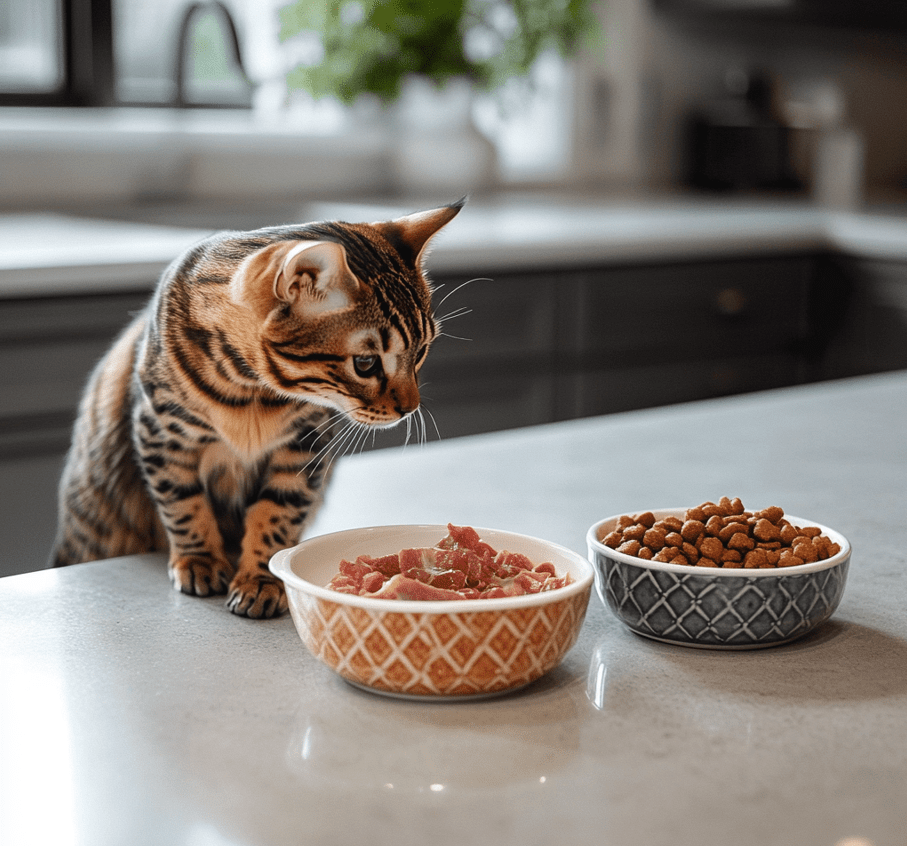
Omega Fatty Acids: Foods rich in omega-3 and omega-6 fatty acids (found in fish oil or flaxseed) promote a shiny coat and reduce shedding.
Vitamins and Minerals: Ensure the food includes biotin, zinc, and vitamin E, which support skin health.
Hydration: Provide fresh water at all times to keep the skin hydrated and prevent flakiness.
Tip: Consult a veterinarian or pet nutritionist to select a premium cat food tailored to your Bengal’s needs. Avoid foods with fillers like corn or soy, which can contribute to skin issues.
3. Maintain a Clean Environment
A clean home reduces allergens and irritants that can exacerbate shedding. Here’s how to create a fur-friendly environment:
Vacuum Regularly: Use a pet-friendly vacuum with a HEPA filter to remove fur and dander from carpets, furniture, and floors.
Wash Bedding: Clean your Bengal’s bedding weekly with a hypoallergenic detergent to prevent dust or allergen buildup.
Use Air Purifiers: An air purifier with a HEPA filter can reduce airborne dander and keep your home cleaner.
Control Humidity: Maintain moderate indoor humidity (40–60%) to prevent dry skin, which can increase shedding.
Tip: Provide your Bengal with a designated scratching post or cat tree to help them naturally shed loose fur while playing.
4. Monitor Health and Address Issues
Excessive shedding can be a sign of underlying health problems. Regular health monitoring can catch issues early and reduce fur loss. Watch for these potential causes:
Allergies: Food or environmental allergies can cause itching and hair loss. Consult a vet if your Bengal scratches excessively or develops bald patches.
Parasites: Fleas, mites, or ticks can irritate the skin and increase shedding. Use vet-recommended flea preventatives year-round.
Stress: Bengals are sensitive to changes in routine. Minimize stress with a stable environment and enrichment activities.

Hormonal Changes: Spaying or neutering can stabilize shedding patterns in some cats.
Tip: Schedule annual or biannual vet checkups to ensure your Bengal is healthy. Bloodwork or skin tests can identify issues affecting the coat.
5. Adjust for Seasonal Changes
Tailor your shedding management routine to the seasons for optimal results:
Spring: Increase brushing frequency to daily or every other day to manage heavy shedding. Use a deshedding tool to remove loose winter fur.
Fall: Brush regularly to help your Bengal transition to their winter coat. Monitor for dry skin, as indoor heating can cause flakiness.
Summer/Winter: Maintain weekly grooming and focus on hydration and nutrition to support a stable coat.
Tip: Keep an eye on your Bengal’s behavior during seasonal transitions. If they seem uncomfortable or shed excessively, consult a vet to rule out health issues.
Common Myths About Bengal Cats and Shedding
There are several misconceptions about Bengal cats and shedding that can confuse owners. Let’s debunk a few:
Myth: Bengal Cats Don’t Shed: While Bengals shed less than some breeds, they still lose hair regularly, especially during seasonal changes.
Myth: Bengals Are Hypoallergenic: No cat is truly hypoallergenic. Bengals produce less dander, but they can still trigger allergies in sensitive individuals.
Myth: More Bathing Stops Shedding: Over-bathing can dry out a Bengal’s skin, leading to more shedding. Bathe only as needed with cat-safe products.
Understanding the truth behind these myths helps owners set realistic expectations and care for their Bengals effectively.
Tools and Products for Managing Bengal Cats’ Shedding
Investing in the right tools can make shedding management easier. Here are some vet-recommended products:
FURminator Deshedding Tool: Reduces loose fur by up to 90% when used correctly.
Hertzko Self-Cleaning Slicker Brush: Gentle on sensitive skin and easy to clean.
Safari Cat Grooming Comb: Ideal for detailed grooming around the face and paws.
PetSafe Drinking Fountain: Encourages hydration to support skin health.
Royal Canin or Hill’s Science Diet: High-quality cat foods with skin-supporting nutrients.
Tip: Always introduce new tools gradually to avoid stressing your Bengal. Start with short grooming sessions and build up as they become comfortable.
When to Seek Veterinary Help
While shedding is normal, excessive or sudden hair loss may indicate a health issue. Contact a veterinarian if you notice:
-
Bald patches or thinning fur.
-
Excessive scratching or skin redness.
-
Changes in behavior, such as lethargy or irritability.
-
Lumps, bumps, or sores on the skin.
A vet can perform diagnostic tests, such as skin scrapings or bloodwork, to identify underlying causes like allergies, infections, or hormonal imbalances.
Living with a Bengal Cat: Tips for a Fur-Free Home
Owning a Bengal cat is a rewarding experience, but their shedding requires proactive management. Here are additional tips to keep your home clean and your Bengal comfortable:
Use Pet-Safe Cleaning Products: Avoid harsh chemicals that could irritate your Bengal’s skin.
Provide Enrichment: Bengals are active and intelligent. Offer toys, climbing structures, and playtime to reduce stress-related shedding.
Create a Grooming Routine: Consistency is key. Set a grooming schedule that aligns with your Bengal’s shedding patterns.
Join Bengal Cat Communities: Online forums or local groups can provide valuable tips from experienced owners.
Conclusion

Managing shedding in Bengal cats during seasonal changes is achievable with the right strategies. By focusing on regular grooming, proper nutrition, a clean environment, and health monitoring, you can keep your Bengal’s coat healthy and your home fur-free. Seasonal transitions may increase shedding, but proactive care ensures your Bengal remains comfortable and vibrant year-round.
If shedding becomes excessive or is accompanied by other symptoms, consult a veterinarian to rule out underlying issues. With the tips in this guide, you’ll be well-equipped to enjoy the beauty and energy of your Bengal cat without the hassle of excessive fur.

